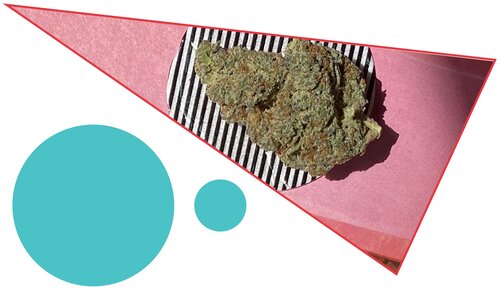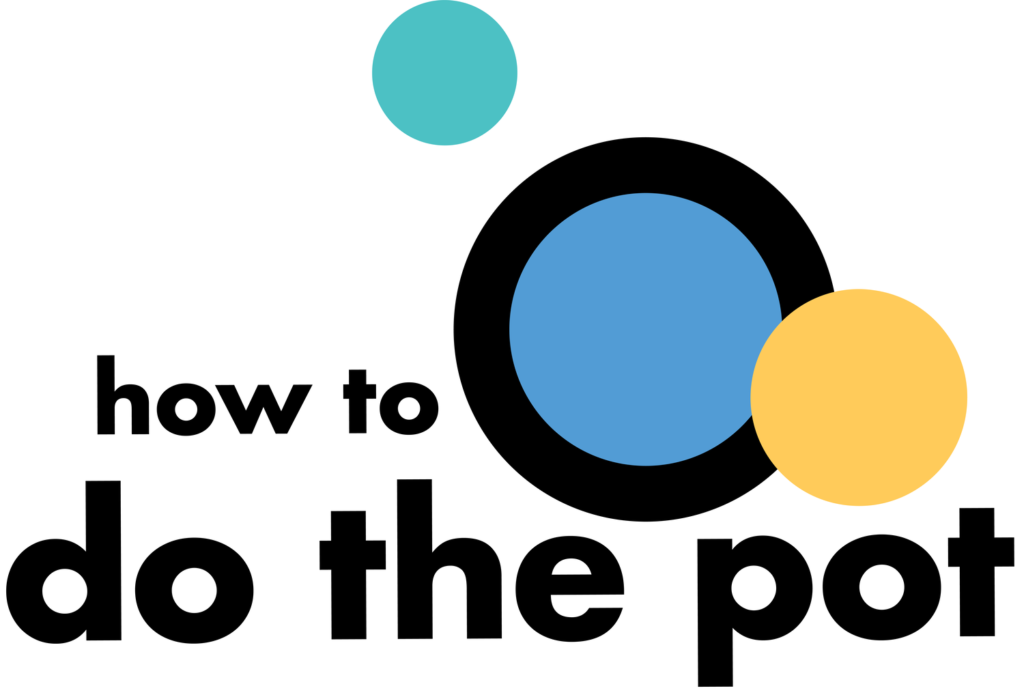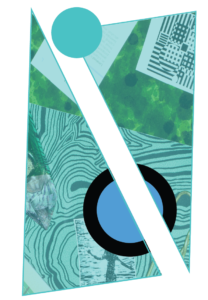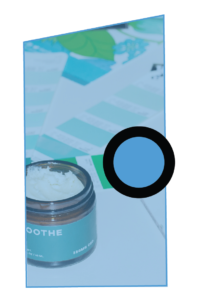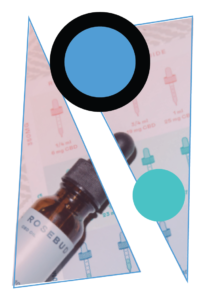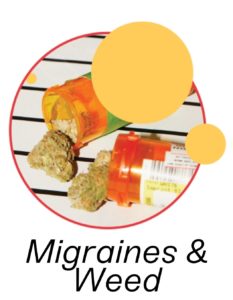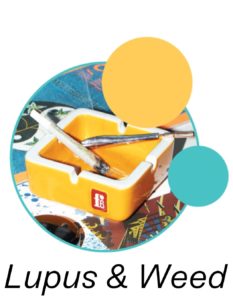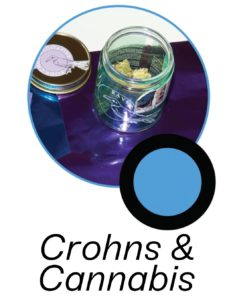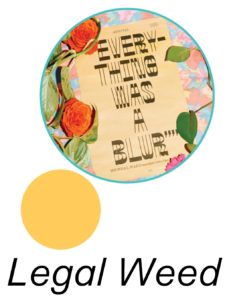3 OF 4 PEOPLE WITH MIGRAINES ARE WOMEN
A migraine is defined as a severe head pain lasting 4-72 hours, with symptoms such as nausea, dizziness, sensitivity to light & sound.
Migraines are 3X more common in women than men and the peak prevalence of onset for women is in their 20s and 30s. Women are more likely to have longer migraine attacks that are harder to treat, as well as more migraine related symptoms.
I got my first migraine when I was in high school and since then they have come in clusters every couple of years. I was prescribed Imitrex but it came with side effects of its own. As an adult, I basically travel everywhere with a migraine preparedness kit, complete with Extra Strength Excedrin, chamomile tea, and weed.
When I start to notice the aura impacting my vision, I chug a glass of water followed by a cup of tea, take an Excedrin and smoke 3X the amount of THC that I can typically handle. The weed helps me shut my body down and fall into a deep sleep while the migraine passes. It also helps to curb the nausea and vomiting that I often experience when I have a migraine. It also allows me to reduce the amount of over-the-counter pills that I would be taking to manage my pain. I have noticed that some strains can make the headache worse.
– Valarie Sakota, Chief Creative Officer Barbari

WHAT DOES THE RESEARCH SAY ON CANNABIS FOR MIGRAINE RELIEF?
A retrospective study in Neurology reported that after using medical cannabis for one month, over 50 percent of patients had a reduction in headache frequency. Patients taking higher levels of THC reported more improvements in headache pain and higher likelihood of reducing headache medications. Significantly, 50 percent of patients using opioid medications were able to reduce their use – after using opioids to treat their migraines for an average of more than 5 years.
A study from the Journal of Pain showed a 50 percent reduction in migraine and headache severity using cannabis. This study suggests that migraine susceptibility is tied to an under-responsive endocannabinoid system. Patients with chronic migraine have been found to be deficient in anandamide, a naturally produced endocannabinoid. Consuming cannabis replenishes a depleted ECS and contributes to better migraine relief.
Eighteen percent of all U.S. women (vs. 7% of men) suffer from migraine disorder and self-reporting indicates that individual results vary. So be patient as you dial in your correct product, strain and dose.
It may take some experimentation to find what works best for your migraines. Some find migraines are bettered by THC, others find no change with THC but respond well to the effects of CBD.

Do the pot
Just like sometimes you take one Advil and sometimes you take three, it’s the same thing with taking THC and CBD products. Different conditions require different doses, even within the same person. Valarie must increase her dosage of THC when a migraine hits, your dose will change depending on the condition. Chances are you can get away with a 20:1 tincture for a pounding headache that is disrupting your sleep.
WHAT IS THE LINK BETWEEN THE ECS AND WOMEN’S CHRONIC PAIN?
The Endocannabinoid System (ECS) is a system like the cardiovascular or nervous system, but its sole job is to keep the body balanced – to keep all the body’s systems working properly. Some studies suggest that clinical endocannabinoid deficiency (CED) is the underlying cause of migraines, fibromyalgia, and even irritable bowel syndrome.
Wearing down the ECS isn’t hard – poor quality food, pollution/chemicals, pharmaceuticals, stress, aging, or genetics all play a role. Consuming CBD or THC helps restore balance to the ECS and to your mind and body. Consuming cannabis replenishes a depleted ECS and contributes to better pain outcomes.
Cannabis, known for its anti-inflammatory properties, is a natural remedy to treat conditions modulated by the ECS, which can reduce associated pain intensity, severity and frequency. There are 10 chronic pain conditions that predominantly affect women and have very similar symptoms. Migraine headache, chronic tension-type headache, temporomandibular (TMJ) joint disorders, Endometriosis, fibromyalgia, chronic fatigue syndrome, irritable bowel syndrome, painful bladder syndrome, chronic lower back pain and vulvodynia affect at least 50 million US women. Once a person has one of these conditions, they’re more likely to accumulate others.

Do The Pot
Does CBD help with headaches? As soon as you feel a migraine “halo” coming on, use a vape pen for migraine relief within a few minutes. We recommend trying a strain with a high CBD to THC ratio for daytime use.
CAN WEED HELP HEADACHES?

While the Schedule 1 Drug status of cannabis limits comprehensive federally-backed medical marijuana research, in 2019 two studies showed promising results with proving cannabis as an effective treatment for migraine pain. Nearly 40 percent of people in the study found their sleep improved, over 30 percent noted an improvement in anxiety, and nearly 25 percent noted improvements in mood.
Ready to give it a try? Take a look at our selection of highly recommended cannabis products, where you can find our favorite products including CBD and THC gummies for migraines, oils and tinctures to help you on your journey to well-being with weed.
